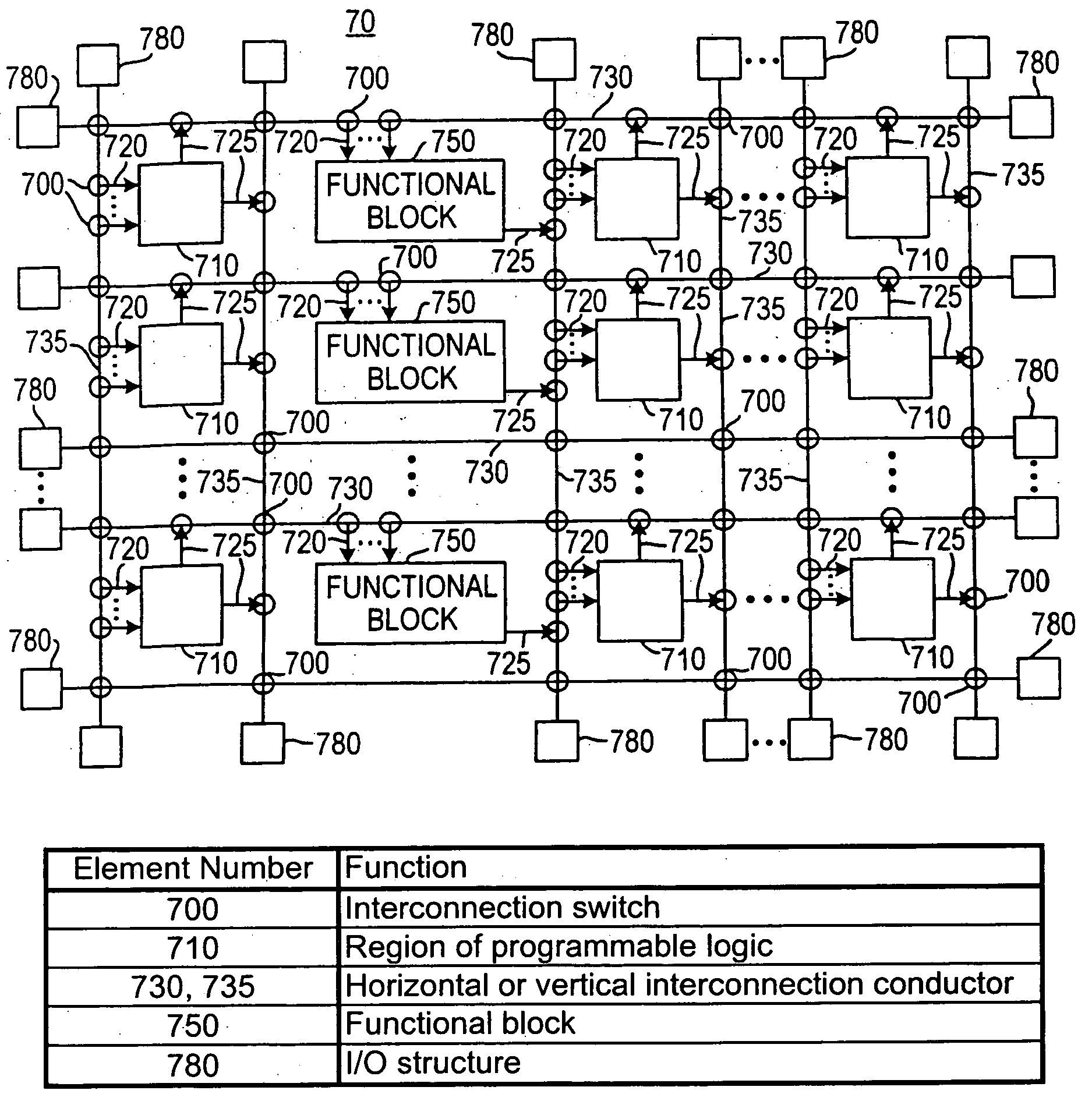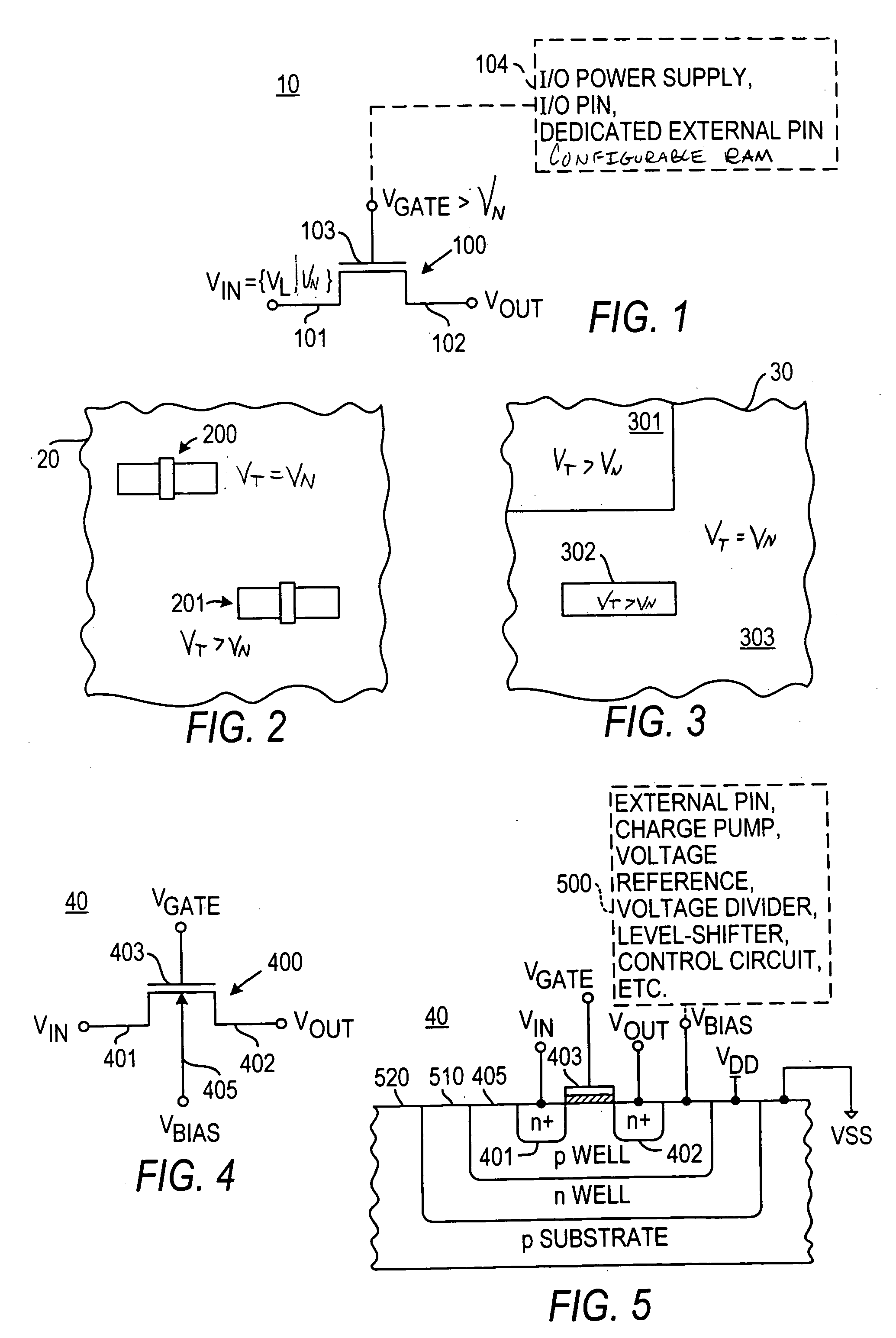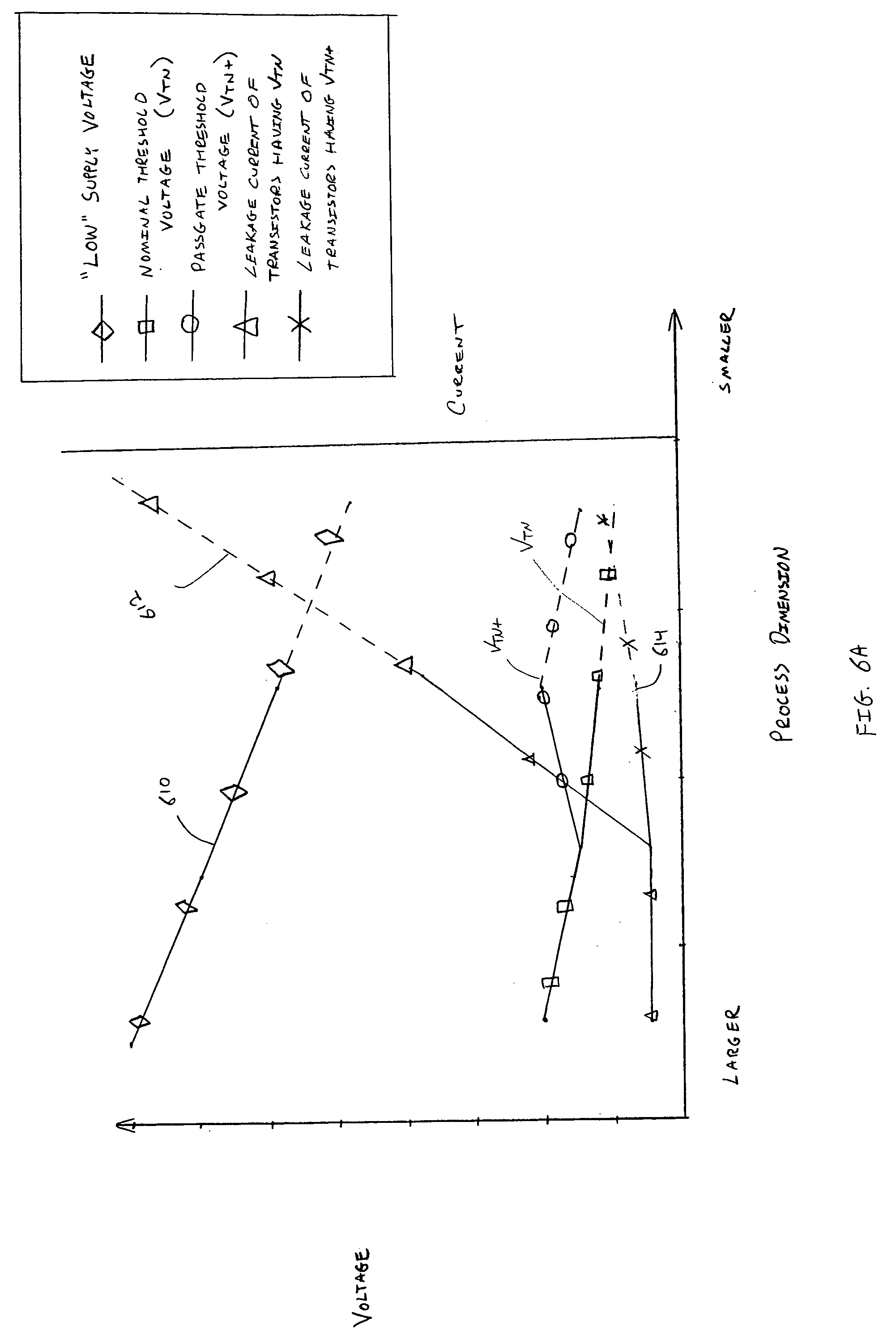Enhanced passgate structures for reducing leakage current
a passgate structure and leakage current technology, applied in the field of integrated circuit devices, can solve the problems of reducing leakage current, high leakage current, and difficult design hurdles to overcome, and achieve the effects of reducing leakage current, high speed operation, and increasing the vt of the passgate structur
- Summary
- Abstract
- Description
- Claims
- Application Information
AI Technical Summary
Benefits of technology
Problems solved by technology
Method used
Image
Examples
Embodiment Construction
[0023] For the purpose of simplifying the discussion of the principles of the present invention, the techniques and embodiments described herein will focus on NMOS passgates. However, the principles illustrated herein are applicable to similar arrangements involving PMOS pass-gates.
[0024] As defined herein, a nominal voltage is the voltage that is used predominately throughout an integrated circuit, such as a programmable logic device, and is typically associated with “low” voltages. The nominal voltage is sometimes referred to as a system voltage or a core circuitry voltage.
[0025] As defined herein, a nominal threshold voltage is the threshold voltage of transistors other than the passgate transistors according to the invention that are included in the integrated circuitry (e.g., programmable logic device). A nominal VT may be the VT of a transistor (e.g., a logic transistor) fabricated using a particular process (e.g., a 90 nm process) without attempting to produce a VT that wou...
PUM
 Login to View More
Login to View More Abstract
Description
Claims
Application Information
 Login to View More
Login to View More - R&D
- Intellectual Property
- Life Sciences
- Materials
- Tech Scout
- Unparalleled Data Quality
- Higher Quality Content
- 60% Fewer Hallucinations
Browse by: Latest US Patents, China's latest patents, Technical Efficacy Thesaurus, Application Domain, Technology Topic, Popular Technical Reports.
© 2025 PatSnap. All rights reserved.Legal|Privacy policy|Modern Slavery Act Transparency Statement|Sitemap|About US| Contact US: help@patsnap.com



